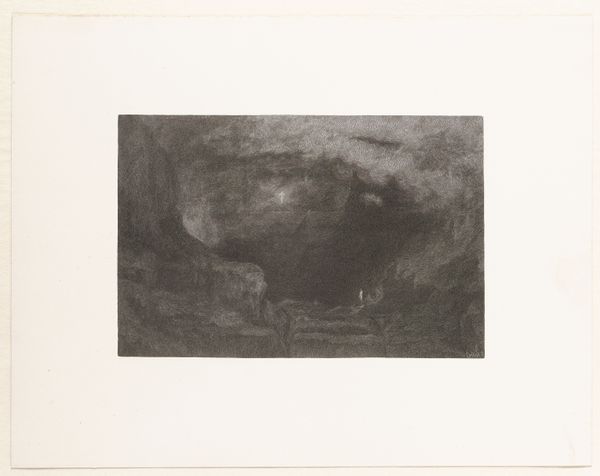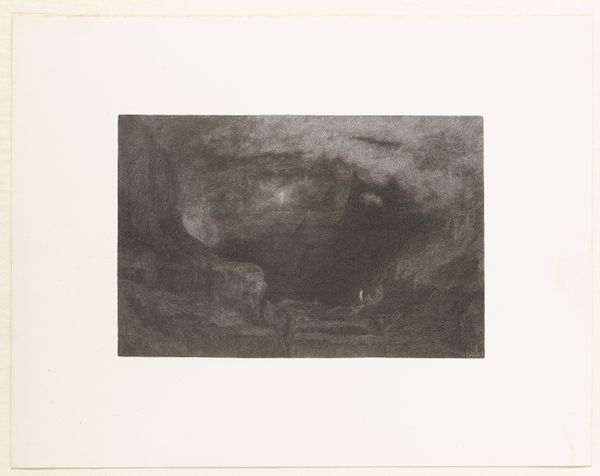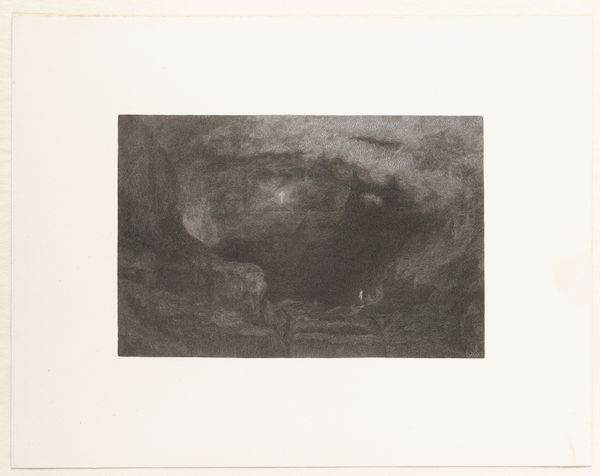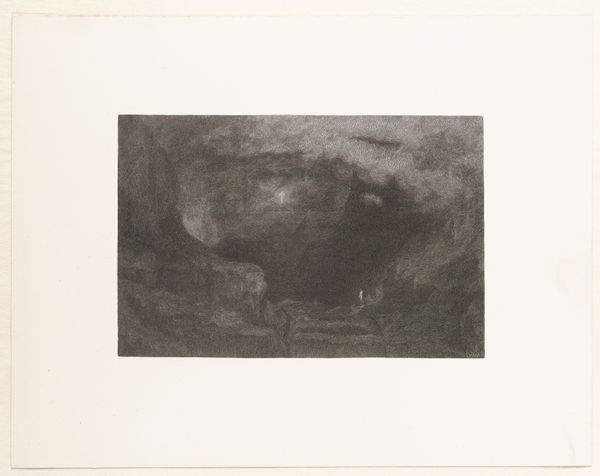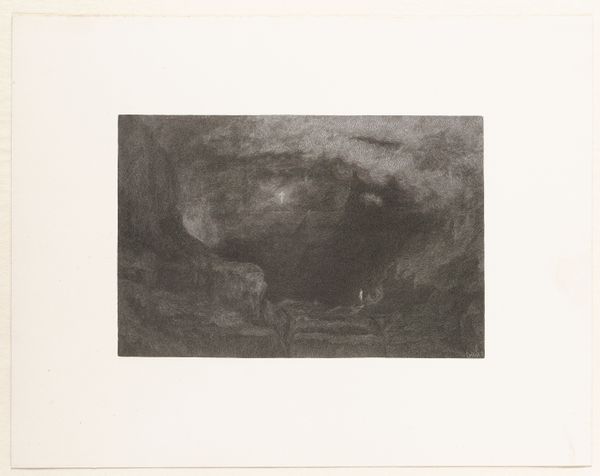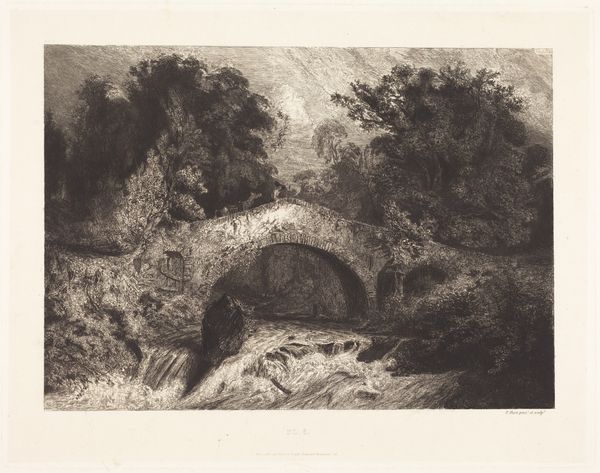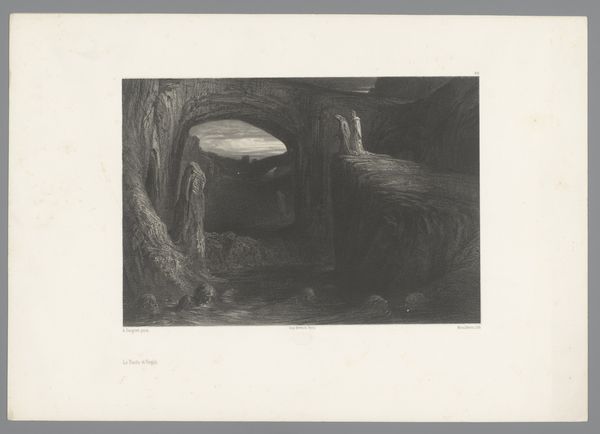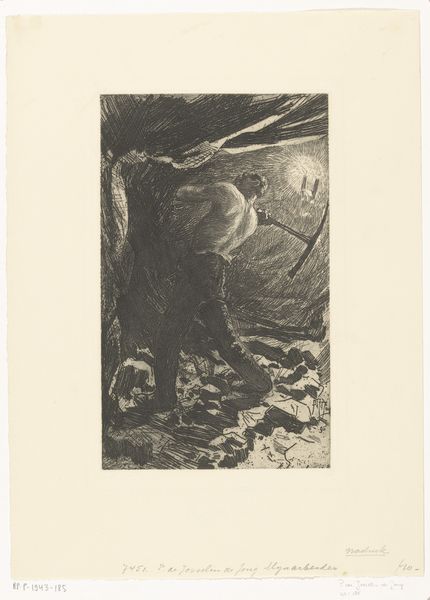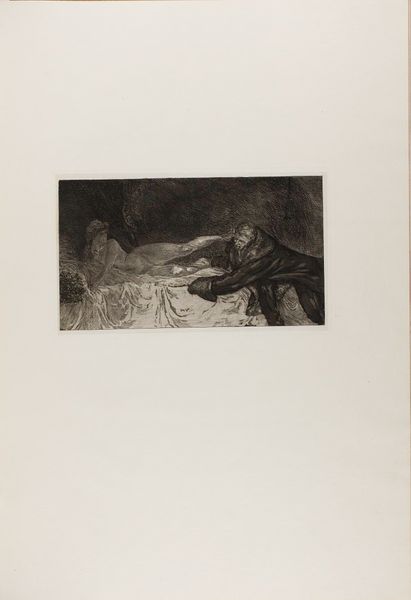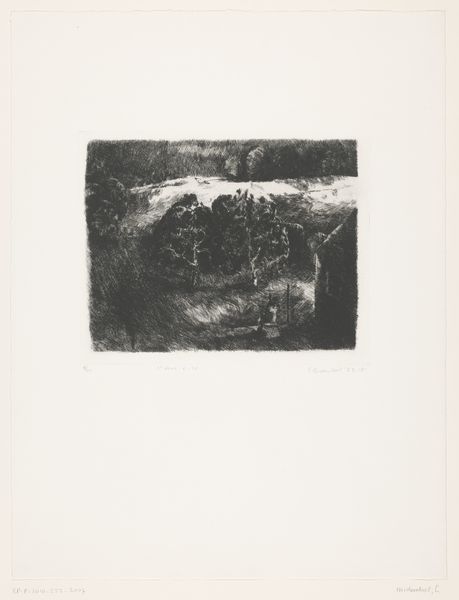
drawing, print, woodcut, charcoal, wood-engraving
#
pencil drawn
#
drawing
#
ink paper printed
# print
#
pencil sketch
#
landscape
#
pencil drawing
#
romanticism
#
woodcut
#
united-states
#
pencil work
#
charcoal
#
wood-engraving
Dimensions: 5 x 7 5/8 in. (12.7 x 19.37 cm) (image)10 3/8 x 12 1/16 in. (26.35 x 30.64 cm) (sheet)
Copyright: Public Domain
Curator: This wood-engraving from around the 19th century, simply titled "Untitled", by William B. Closson, immediately pulls the eye into its chiaroscuro landscape. Editor: It certainly does. The contrast between the deep blacks and almost ethereal white highlights evokes a feeling of being on the threshold, the edge of something unknown. What stands out is its reliance on craft; the medium itself makes the artist grapple with the physical and tangible qualities of production. Curator: Absolutely, that play of light and dark resonates deeply with Romantic ideals. The solitary figure positioned almost centrally draws heavily from the late eighteenth century and early nineteenth-century sublime traditions in painting; one might recall Caspar David Friedrich’s work in that same period. This work suggests themes of individual experience against overwhelming forces of nature, underscoring an existential quest for meaning in modernity, resonating, dare I say, in our current social and political landscape as well. Editor: Yes, but the means of production have always interested me. Imagine Closson’s engagement with his materials—the woodblock, the gouges, the pressure applied to the paper, laboring for hours in a meticulous and delicate dance with matter. That is no accident; rather, he’s taking an active role in transforming raw material through physical effort and skill. How this piece functions commercially is relevant to understanding its accessibility and its historical standing too. Curator: I completely agree that materiality and context of production are essential to consider. Viewing Closson's labor, technique, and chosen material as expressive facets in the narrative is an imperative way of viewing it within an understanding of nineteenth-century aesthetics and burgeoning notions of art, work, and access, questioning power structures, elitism, and gendered spaces. Editor: Thinking about this Untitled print reminds us how artists manipulate raw elements. I now realize, having talked with you about it, this isn't just an image. This becomes a record of actions that occurred to create it; the decisions regarding labor and process serve an aesthetic and, equally, a political function.
Comments
No comments
Be the first to comment and join the conversation on the ultimate creative platform.
